Futures
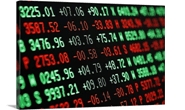
Hot Rolled Futures: Uncertainty's Leading to Softer Prices
Written by Jack Marshall
June 18, 2020
The following article on the hot rolled coil (HRC) steel and financial futures markets was written by Jack Marshall of Crunch Risk LLC. Here is how Jack saw trading over the past week:
Steel
Uncertainty is leading to softer HR prices as optimistic forecasts are met by a slower than expected recovery process. A case of over promising and underdelivering.
After a spot price pickup early in June, we have seen HR futures prices retrace in the near end of the curve as reality sets in. Jul’20 futures traded at $500/ST today. Progress appears to be lagging expectations as capacity utilization rates remain stubbornly anchored around 50 percent. Recent price declines for physical spot deals as reflected by the indexes and softer than expected lead times have led to broader selling pressure. In addition, a number of integrated mills are starting up select automotive furnaces, which will add to extra capacity concerns.
Since the beginning of the month, the Q3’20 HR futures have declined by about $17/ST and Q4’20 HR futures declined by roughly $6/ST. Calendar 2021 HR futures prices have been more resilient as the Q1’21 and Q2’21 quarters are both flat to slightly higher than at the beginning of the month. The stronger levels suggest the market is looking for a pickup after the turn of the year.
Below is a graph showing the history of the CME Group hot rolled futures forward curve. You will need to view the graph on our website to use its interactive features; you can do so by clicking here. If you need assistance with either logging in or navigating the website, please contact us at info@SteelMarketUpdate.com.
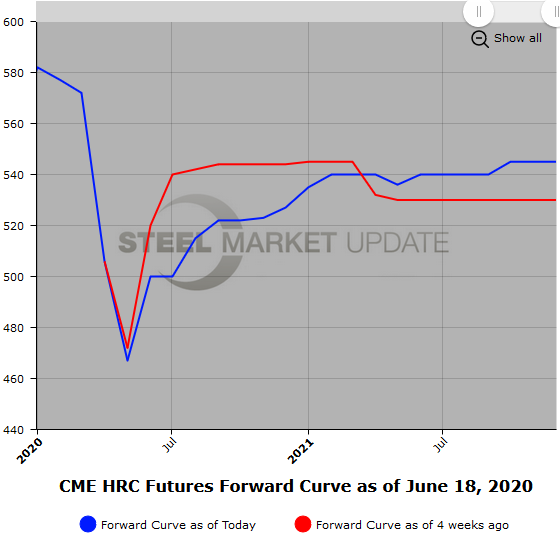
Scrap
Increased selling interest in the BUS futures for the balance of 2020 has led to a softening BUS futures curve after a strong move higher at the beginning of the month. Underwhelming demand for prime scrap, likely due to a slower paced recovery than the market was forecasting, has helped to dampen the supply shortage story. Also, reports of a number of seaborne scrap and pig iron cargoes due for June/July delivery could be leading to early chatter that BUS will likely retrace $10/$20 per GT next month.
Below is another graph showing the history of the CME Group busheling scrap futures forward curve. To use its interactive features, view the graph on our website by clicking here.
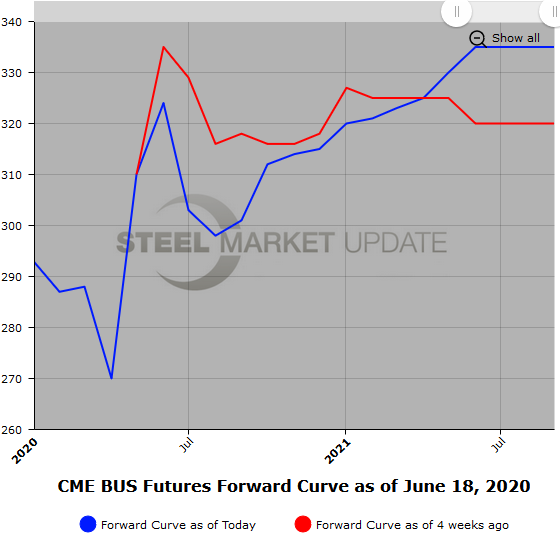

Jack Marshall
Read more from Jack MarshallLatest in Futures
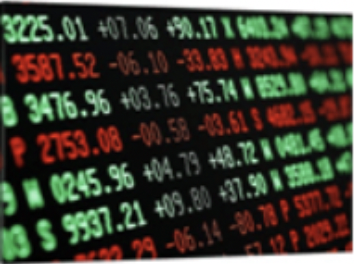
HR Futures: Correction in market after big rally
Another eventful week in the physical and financial steel markets is coming to a close, but with a markedly different tone than the last update at the end of February.

HR Futures: Market drifts lower on light volume
Over the past couple of weeks, Midwest HRC futures have been drifting lower on light volume. This begs the question if the rally has run out of steam, or is it catching its breath after ripping roughly $150 in less than two weeks? The April CME Midwest HRC future made an intraday high at $976 […]

HR Futures: Uncertainty hangs over the steel market
Uncertainty has remained a dominant theme in the US ferrous derivatives markets over the past month. And the Trump administration's tariffs on steel and aluminum are still top of mind for market participants.

HR Futures: Major trade developments lift the ferrous complex
Headline risk has returned to the ferrous complex, with both hot-rolled coil (HRC) and busheling ferrous scrap (BCH) markets surging in response to fresh trade restrictions.
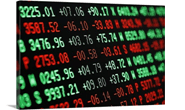
HR Futures: Midwest ferrous futures consolidate gains, market anxiously awaits next move
Four weeks have passed since the last article from Rock Trading Advisors on January 30. The paint has dried, and Midwest HRC futures have exploded higher in response to President Trump’s declaration of impending 25% tariffs on all imported steel products. The rolling 2nd month CME Midwest HRC future erupted through the top end of its downtrend, one that dates back to the peak of the winter 2022 rally. It also broke out of its narrow range seen dating back to June of last year.
